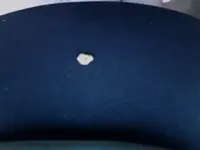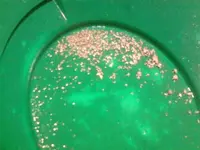Darn, I thought I had the mystery of the vanishing gold solved, now I dont know. I got this on Google
This is sorta awkward. Gold doesn't really "burn" in the general sense. Take some solid gold and heat it. When it gets hot enough (1064.18 °C or 1947.52 °F), it melts. It was a solid, and now the gold has changed state to become a liquid. But here's the catch. Gold, which is called a noble metal, just sits there molten. That's because it doesn't like to react with anything, and that means it is extremely difficult to "burn" gold. It won't oxidize (combine with oxygen), which is the basis for most "burning" in the conventional sense. (There are other forms of burning, but we'll set them aside for now.) Our liquid gold? Continue heating it and it will change state to a gas and boil away. Just like water would.......................
________________________________________________________________________
True, but only in a general sense. I've had the horrible experience of smelting gold in a small stainless steel dish. (Well, you have to learn some how.)

I ended up with a thick gold plating on the stainless steel. (About 4 grams in an area of about 3/8ths of an inch in diameter.) Note to myself, self, next time use a clay crucible or iron. I just wanted to melt some fines down into a button.

But, the point of this is; I had the stainless steel white hot, and I don't believe any of the gold "vaporized". And, though I guess it would be possible to "vaporize" gold, it would take more than an open firepit. Incidently, in 50+ years, I've never heard of any of the many miners I've known "vaporizing" gold.
Now, as to the mercury, it's so easy (and safe) to separate the gold from the mercury, I never understood why anybody would take a chance with theirs and others lives by using the old potato trick. Must have read about it somewhere.

If you want to separate gold from mercury easily, have a container of NITRIC ACID in a safe storage container. Take a small glass or beaker, (I said GLASS,) and carefully pour about an inch of the nitric acid into it. Now, make sure you stand up-wind of it and drop the amalgm (gold and mercury) in. You will immediately see a dark, brownish, thick vapor coming out of the glass. Be careful not to breath any of it. It is pretty much a vaporized acid.
Once the nitric acid stops reacting to the mercury, you will have a "sponge" of gold. Now, you're probably thinking that the mercury went out with the vapor, right??
Not true.
Carefully pour the acid into another clean glass container. You can now take the "sponge" outof the original glass with a stainless steel spoon or tweezers and put it in a small, shallow bowl. You can wash it now or later.
Now for the moment of truth!!
Cut a penny, or copper wire into
small pieces. Now, drop one of the small pieces into the acid. Again, don't breath the vapor!! What you are doing now is precipitating the mercury that is in suspension in the acid. Keep dropping the little pieces into the acid, one at a time, until the acid quits reacting. By this time, you will see your mercury laying on the bottom, and the copper or zinc will now be in suspension. (Personally, I prefer to use zinc for the precipitation.) And the acid with the zinc/copper in suspension? I'd put mine in a heavy plastic container for proper disposal. Of course, it might take a while to accumulate enough to bother with.
You can now flush your mercury off with a little fresh water and put it back in its'
container.
Eagle







